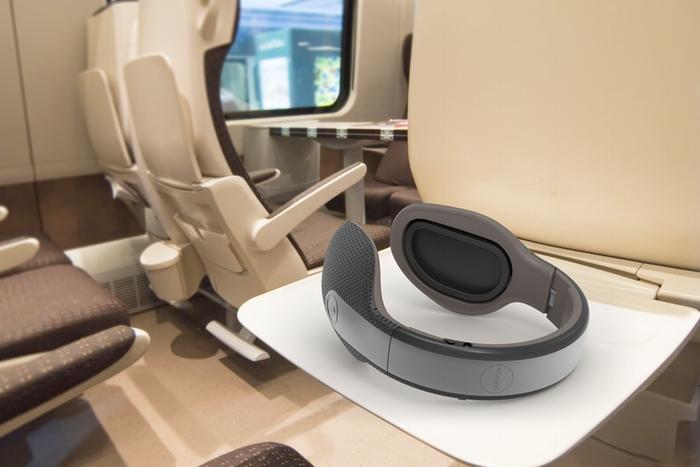
A couple years ago, an innovative new project popped up on Kickstarter and took the web by storm. Luci, as it was called, was an EEG headband that could read your brainwaves, detect when you were dreaming, and then automatically play sounds to help you enter a lucid dream state. It was a brilliant idea, and it gathered tons of support in just a few weeks — but unfortunately turned out to be a scam. The project was eventually cancelled after the Internet debunked the creator’s bogus claims, and the product never made it past the conceptual phase.
But not to worry — the the idea of brainwave-sensing headphones hasn’t died out entirely. Now, thanks to a mechanical engineer by the name of Tim Antos, it’s back and better than ever. Antos has recently taken to Kickstarter to help fund Kokoon: a set of app-enabled EEG headphones that can perform a wide variety of different functions — including the potential to induce lucid dreams.
Before it plunges you into Inception-style dream adventures, however, Kokoon’s first mission is to help you get to sleep. Luckily, that’s exactly what it’s designed for. Unlike most over-ear headphones, Kokoon’s cans are specifically designed to be worn while the user is either sleeping, or trying to fall asleep. The ear cups are soft, breathable, and low-profile for extra comfort, and all audio is stored inside of the
Once you slip them on, an array of embedded EEG sensors start reading your brainwaves, which Kokoon interprets and uses to adjust audio playback accordingly. If the device detects that you’re drifting off, it will automatically adjust the volume and equalizations settings so that it doesn’t disturb your sleep. It also adapts your audio to block out external noises and disturbances which may compromise your deep sleep.
It doesn’t stop once you’re fully asleep, either. While you’re out, Kokoon’s EEG sensors continue to monitor your brain activity and gather detailed information on how you’re sleeping. Over time, the app learns what sounds help you sleep best, and offers suggestions on how you can get better rest each night. It’s even got a smart alarm function that wakes you up when you’re at the lightest part of your sleep cycle, so you get out of bed feeling alert and refreshed.
The awesome part is that Kokoon’s creators plan to open up the device to third-party developers, so the range of potential uses doesn’t end there. Antos envisions that Kokoon could be used for things like responsive binaural beats, reactive music, polyphasic sleeping, sleep learning, mediation, and — of course — triggering lucid dreams.
Just keep your fingers crossed it’s not another scam!



